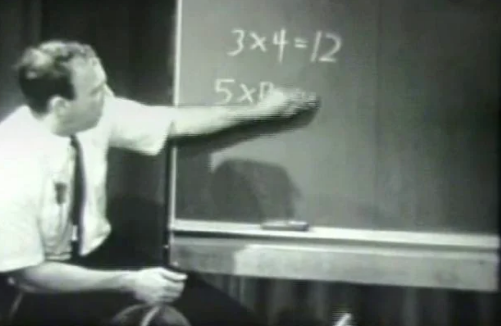Jon Owen comes to feed my curiosity about Engelmann’s Direct Instruction. This time a sign post to Shepard Barbash’s (2012) ‘CLEAR TEACHING:
With Direct Instruction, Siegfried Engelmann Discovered a Better Way of Teaching.’ My first reference to DI was back in March 2020 when I was looking at the difference between instructions and teaching.
Why isn’t DI more popular? Is what makes DI stand out.
I believe Engelmann addressed this himself. DI has an image problem. Somewhat ironic given we learn the Englemann quit his advertising job to “find work writing educational programs.” In the opening, Barbash points to DI’s old-school approaches being “scorned by Progressive Era reformers.” Later he adds that DI puts more responsibility on educators to achieve results, it gives teachers less freedom and it defies a vast system’s enormous stake in the conventional wisdom. However it is these very components that make DI stand out. Perhaps, Barbash’s innocuous comment hides more of the truth? “There is no quick or easy way to summarize Engelmann’s approach to teaching.”
It is hard to communicate how to communicate, it’s not so clear how to be clear.
Shepard Barbash’s (2012: 42)
As I understand it, as Barbash reports, Englemann designed an approach that worked? Perhaps more accurately, an approach that did not fail.
Barbash offers us five big rules of DI.
- Be clear
- avoid generating confusion or misrules (faultless explanation)
- Be efficient – teach more in less time and at less cost
- careful sequencing
- scripts and choral student responses
- raid response – address limited working memory
- Teach to mastery
- “…start as close as possible to where the learner performs,” Englemann
- academic challenge (70% correct)
- challenge, mastery, correct and repeated practice (“Repetition is the mother of memory.”)
- at most 15% new material, 85% reinforcement – “…a systematic trickle of new information.”
- test every 5-10 lessons
- tasks are explicit and specific enough to be correctable
- Celebrate success
- high success rates, high praise
- ‘The Fooler Game’ or ‘Beat the teacher’
- sincerity counts
- Beware intuition
- DI programs are designed to reduce intuition, to be replaced by evidence.
Second Half
The second half of the booklet is more narrative than informative, more rallying call, more a call to arms. Contesting the generalists challenges DI has and continues to faced whilst confidently reasserting Englemann’s position of “Show me something more effective than DI.”
I should add that this sits within, and as an interpretation of, Siegfried Engelmann and Douglas Carnine in their book “Theory of Instruction: Principles and Applications”
- Begin with the end in mind: Start each lesson with a clear objective that states what students will be able to do by the end of the lesson.
- Start at the beginning: Teach the most basic concepts first and then build upon them. Ensure that students have mastered each concept before moving on to more complex ones.
- Teach to Mastery: Provide ample opportunities for students to practice new skills and concepts until they have mastered them. Use assessment and feedback to monitor student progress and adjust instruction accordingly.
- Direct Instruction: Use explicit and systematic instruction to teach new skills and concepts. Model and demonstrate the desired behavior or skill, provide guided practice, and then gradually release responsibility to the student.
- Provide cumulative review: Regularly review previously learned concepts and skills to reinforce learning and prevent forgetting. This can be done through periodic quizzes, tests, or other review activities.



Pingback: No rescuing – Edventures
Pingback: No rescuing – Edventures